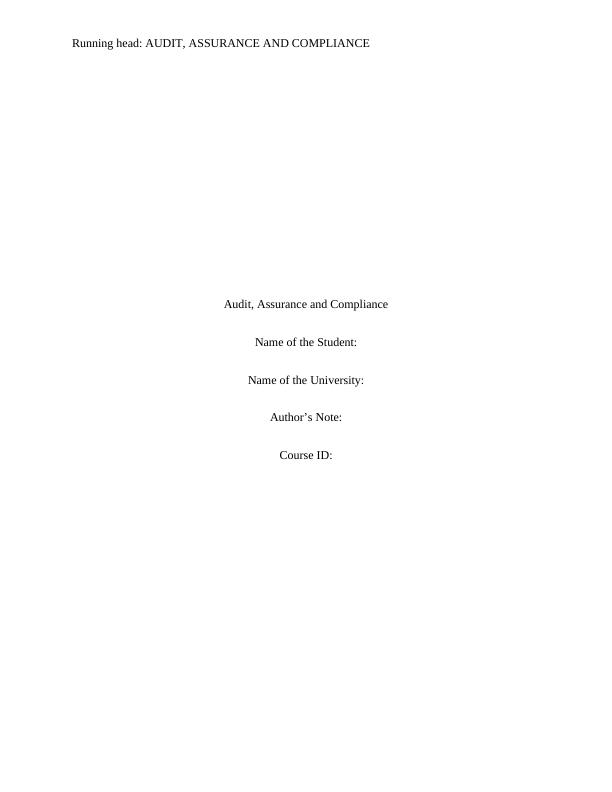HI6026 - Assignment - Audit, Assurance & Compliance
12 Pages2881 Words54 Views
Holmes Institute Sydney
Audit, Assurance and Compliance (HI6026)
Added on 2020-03-07
About This Document
In the HI6026 Assignment, we will discuss Audit, Assurance & Compliance. We cover analytical procedures for the financial report information of DIPL, two inherent risk factors that arise from the Nature of DIPL’s Business Operations, and factors relating to misstatements arising from fraudulent financial reporting.
HI6026 - Assignment - Audit, Assurance & Compliance
Holmes Institute Sydney
Audit, Assurance and Compliance (HI6026)
Added on 2020-03-07
ShareRelated Documents
End of preview
Want to access all the pages? Upload your documents or become a member.
HI6026 - Audit, Assurance and Compliance | Assignment
|12
|2880
|56
HI5026 Auditing and Assurance Services
|13
|2968
|47
HI6026 - Audit, Assurance and Compliance, Question/Answer
|10
|2418
|34
Audit, Assurance and Compliance - HI6026
|10
|2715
|41
HI6026 - Audit, Assurance and Compliance Questions Answers
|11
|2662
|37
HI6026 - Audit, Assurance and Compliance | Case Study
|11
|2559
|56




